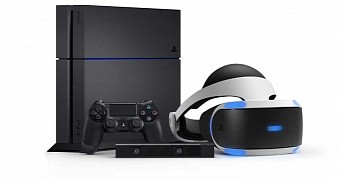The PlayStation VR might just become the most successful virtual reality solution launched in 2016 and Sony has been moving to offer more details about the device and its capabilities, after failing to disclose much more than the launch date and price during its big presentation at the Game Developers Conference.
Chris Norden, the senior staff engineer, working on the VR concept, has offered some extra information about the processing unit that is part of the package and was rumored to provide the extra processing power required to make sure that VR works well for all users.
Polygon quotes him as saying that, "It is not extra GPU power/ CPU power. It is certainly not a PlayStation 4 expansion unit or upgrade. Actually, it's not really accessible to the developer in any way. The PlayStation 4 is perfectly capable of 120 Hz."
Apparently, the processing unit associated with the PlayStation VR is mainly needed to power the complex object-based 3D audio system of the virtual reality platform and to run the social screen, which allows all output associated with the device to also run on a television screen.
When Cinematic mode is activated, so that the user can watch media content or play a normal PlayStation 4 title, the processing box helps with the creation of the simulated screen that the player sees.
PlayStation VR will be offered in October
Sony says that it will offer a clear launch date later in the year but has revealed that the price of its device is set at 399 dollars or Euro, although gamers will also have to own a PlayStation Camera, which is about 60 extra dollars or Euro, to run virtual reality.
The company has also admitted that it is planning to create bundles that feature both the above products as well as a Move controller, although it is unclear when they will be offered or how much they will cost.
So far a limited number of virtual reality titles, including Tumble VR, an experience based on Star Wars Battlefront and PlayStation VR Worlds, have been revealed but apparently 230 developers are working with the tech.
At the moment those who want to experience gaming-related VR can also pick up the Oculus Rift and the HTC and Valve made Vive, both of which run on the PC and are more expensive than the PlayStation VR.
Microsoft is working on its own HoloLens, which does not have a launch date and is designed to offer an augmented reality experience.

 14 DAY TRIAL //
14 DAY TRIAL //